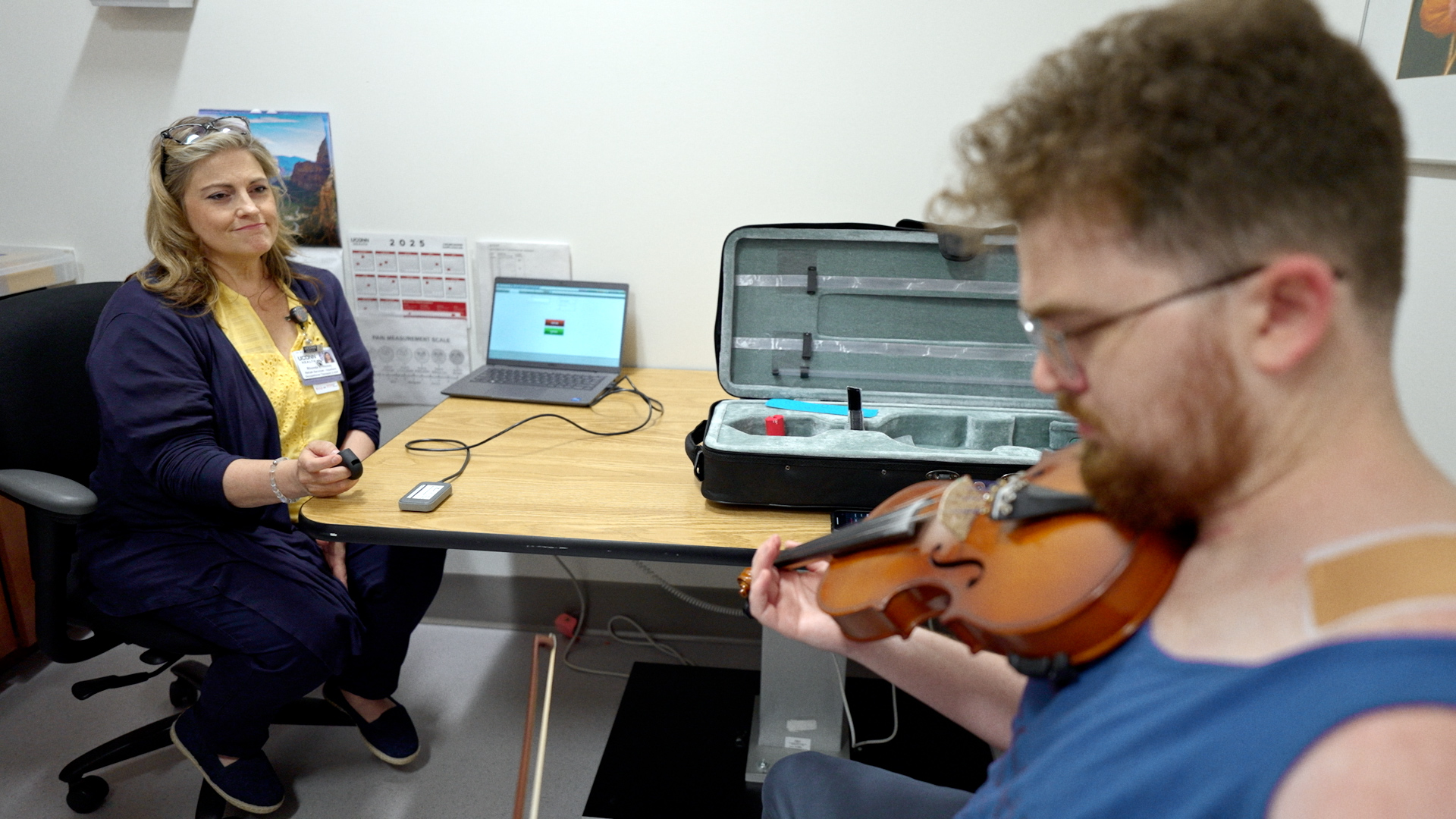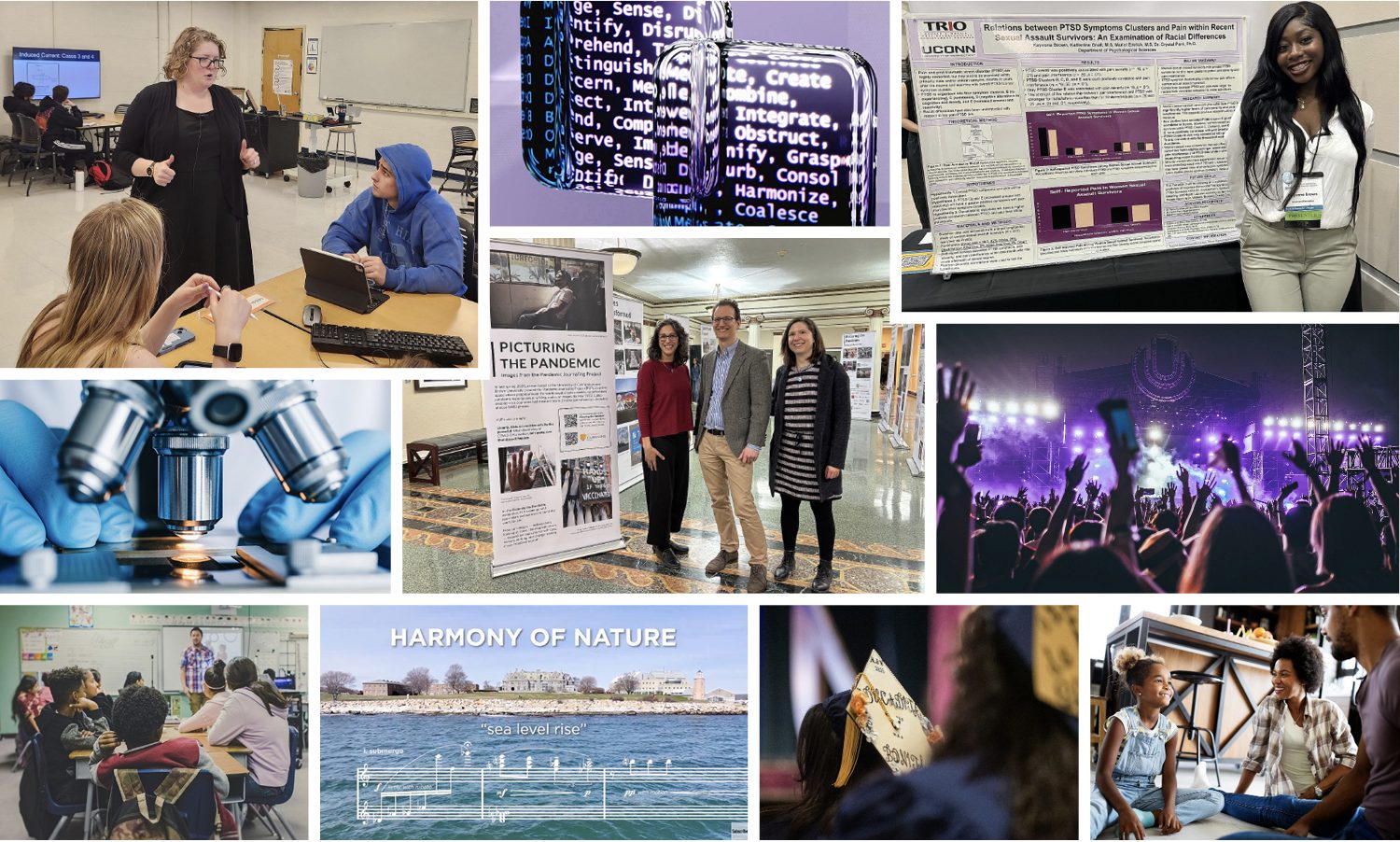 Alumna Sharon Nunes (M.S., Ph.D., Materials Science, ’80, ’83) relishes her role as Vice President of Big Green Innovations in IBM’s Systems & Technology Group (STG). The initiative, unveiled in early 2007, positions IBM as a world leader in developing and propagating environmental conservation strategies and analytical techniques across the technology sector. Big Green Innovations (BGI) aims the computing giant’s formidable information technology expertise on critical environmental problems around the globe.
Alumna Sharon Nunes (M.S., Ph.D., Materials Science, ’80, ’83) relishes her role as Vice President of Big Green Innovations in IBM’s Systems & Technology Group (STG). The initiative, unveiled in early 2007, positions IBM as a world leader in developing and propagating environmental conservation strategies and analytical techniques across the technology sector. Big Green Innovations (BGI) aims the computing giant’s formidable information technology expertise on critical environmental problems around the globe.
Before being named VP of Big Green Innovations in December 2006, Dr. Nunes was the Vice President of Strategic Growth Initiatives in the company’s STG unit. An IBM veteran who began her career with Big Blue more than two decades ago, Dr. Nunes held positions as Vice President of Technology and Vice President of Emerging Business at IBM’s Thomas J. Watson Research Center, Yorktown Heights, NY. She has retained strong ties with UConn and serves on the School of Engineering Advisory Board and on the Board of Directors for the UConn Foundation. She is also an articulate spokesperson for women in technological fields: she serves as a member of IBM’s executive advisory council for the Society of Women Engineers and is a member of the Anita Borg Institute’s Senior Women’s Leadership Group.
Dr. Nunes recently spoke with us about BGI, a portfolio of environmentally-focused initiatives that IBM describes as “innovation that matters for our company and for the world.” Through BGI, the company is leveraging its impressive IT knowhow to help companies, governments and other organizations assess, model and reduce their resource usage. BGI targets three main vectors: advanced water management, alternative energy, and carbon management. In the area of advanced water management, the company offers scenario modeling of weather, water demand and availability, and new technologies; water network management using sensors; filtration; and consulting.
IBM Jams
BGI emerged out of IBM’s collaborative online “jam” process, which was launched in 2001 when the company issued a 72-hour brainstorming challenge to its 300,000-plus employees worldwide to redefine the company’s values. IBM has since utilized jams to explore other far-reaching business, technical, and social implications. For example, in 2005 IBM hosted a jam with urban specialists, government leaders, and residents from cities around the world to explore issues related to urban sustainability. Once the brainstorming session completes, IBM uses text mining software to help the company harvest the most promising jam ideas for investment. It was during the 2006 Innovation JamTM, which hosted more than 150,000 people from 104 countries, that BGI and nine other new businesses were conceived and launched with $100 million dollars in seed funding from IBM’s Chairman, Sam Palmisano.
Having helped formally launch IBM’s carbon management business last year, Dr. Nunes now has turned a majority of her focus toward developing business opportunities in the advanced water management and photovoltaics markets. The urgency of the global water crisis dominates her attention. “We at IBM think of freshwater as a limited resource. Forty-one percent (2.3 billion) of the Earth’s residents live in water-stressed areas. Water management is extremely complex because of increasing global demand, serious and growing drought conditions, and the impacts of global warming. If you look around the globe, there are severe droughts in the western U.S., Africa, the Middle East, portions of the Far East and Australia. These sorts of dire situations are expected to become even more widespread over the next decade.”
Global warming is playing a pivotal role, she said, in intensifying the trend and heightening political action. Much of California’s spring and summer water supplies are drawn from snowpack in the Sierra Nevada Mountains; global warming is dramatically reducing this snowpack. “In June 2008, Governor Schwarzenegger issued a formal drought declaration for the state and is enforcing a range of water restrictions state-wide. Some California towns have stopped issuing building permits because they can’t guarantee that water will be available for the 20 years required by state law. North Carolina and Georgia are experiencing drought conditions which are impacting the water-sharing agreements in place with neighboring states. Even in the water-rich Northeast, there are water resource concerns. The town of Brockton, MA is building a water treatment and desalination plant to address the chronic ingress of brackish water from the Taunton River. This problem has produced water shortages, and in response, the town has slowed the approval of building permits. Water resource problems profoundly affect economic development.”
Consumption Rising
According to Dr. Nunes, agriculture accounts for 70% of water consumption globally. “But manufacturing, the energy industry, regular consumers and governments also use water. Beyond the obvious users like food and beverage producers, there are companies like IBM that use lots of water in their manufacturing processes. We need to find ways to reduce our consumption. Israel is using drip farming to conserve water in their agricultural businesses. It’s very technology-driven.”
Dr. Nunes said “Our premise is that if water becomes scarce, the best way to begin to manage it is by measuring and monitoring it.” To this end, IBM is applying the supercomputing technology that is used to run weather forecasts and is developing systems to take that data and use it to model and predict water supplies and usage in support of better water management.
“IBM is looking to help scientists, businesses, and governments understand water in a holistic way,” she said. “For example, water efficiency goes hand-in-hand with energy efficiency and reducing carbon emissions. Energy is required for capturing water, transporting it, purifying it, and filtering it. To deliver clean water to U.S. consumers takes, on average, 2-3% of the electrical grid – delivering water resources in California takes 15-20% because significant water needs to be transported from the north over the Tehachapi Mountains to the south. At the same time, many production processes are heavily dependent on water for processes like cooling (energy production) and mineral extraction (mining). We believe there will be tremendous value in helping the world navigate this complex water-energy-carbon nexus with better understanding.”
While many look to desalination, Dr. Nunes said current desalination methods are neither economical nor energy efficient. “Using more energy to transform waste or saltwater into drinking water means greater cost and greater contribution to greenhouse gases.” The company is collaborating with partners in the Middle East to develop economical desalination technologies, but conservation is viewed as a better long-term, economical solution.
Managing and Measuring
IBM is creating systems and software that will allow the various constituents – government officials, land owners, industry officials, enterprises, and its own managers – to review key data and make informed decisions about water usage and management. “We conducted an audit at our Burlington, VT silicon plant and determined that we could save $650,000 a year by better managing the water we use in our tools; another $900,000 in water processing within the plant, and – on top of that – another $1.5 million a year in associated energy savings -and we realized these savings while increasing manufacturing output by 33%. All told, the solution reduced our water consumption by more than 300 millions gallons of water and more than $3 million dollars in cost savings in one year.”
Among IBM’s most high profile collaborations is its partnership with The Nature Conservancy’s Great Rivers project. According to Dr. Nunes, “If you build a dam, log a forest or divert a stream, these acts have cascading consequences. We are helping them examine the impacts of such actions. For example, building a dam can result in greater sediment buildup, changes in the ecosystem and fish life, alterations in the nutrients, impacts to farmers downstream from the dam, etc. We’re trying to get a better understanding of how natural and man-made systems interact.”
“We also work with industry. When we do a resource audit for a company, we usually do a 1-to-2 day workshop, perhaps embed some IBM employees for a few weeks or more so they can really get familiar with the plant operations before implementing the conservation techniques. IBM has been working with steel companies, energy companies, textile and paper manufacturers, and consumer goods companies. Think about toothpaste, food and cleaning product manufacturing – all of which use a great deal of water in their products. Some of our clients are concerned with downstream consumption as well, since use of their products (such as soaps, shampoos, detergents, and foods) consumes additional water during use.”
In terms of judging the success and impact of BGI, Dr. Nunes said “We are in an ’emerging business’ area.” While a traditional business gauges its performance on profit and revenue generation, she said, “In an emerging business, you judge your performance by market share, growth, impact on thought leaders, and other measures. In the last 18 months, we have sought to understand how we can apply our IT and business process expertise to these problems. We have met with thought leaders in business and industry, global officials, NGOs and government policy leaders to help raise market awareness concerning water, energy and related issues. We are discussing the role information technology can play in dealing with the complex nature of the environmental challenges ahead of us.”
“Our greatest success so far has been raising awareness of water as a critical issue carrying huge social and business implications. Everyone in our organization has become incredibly sensitized to the issues and energized by the important role our business can play to benefit society – and that passion is quickly spilling to every corner of IBM. The more you know about global water quality, usage and availability, the more concerned you become with how to protect this resource. Our challenge going forward is really to help people understand how information technology is helping to address this challenge and orient our clients towards more strategic solutions,” she said.


